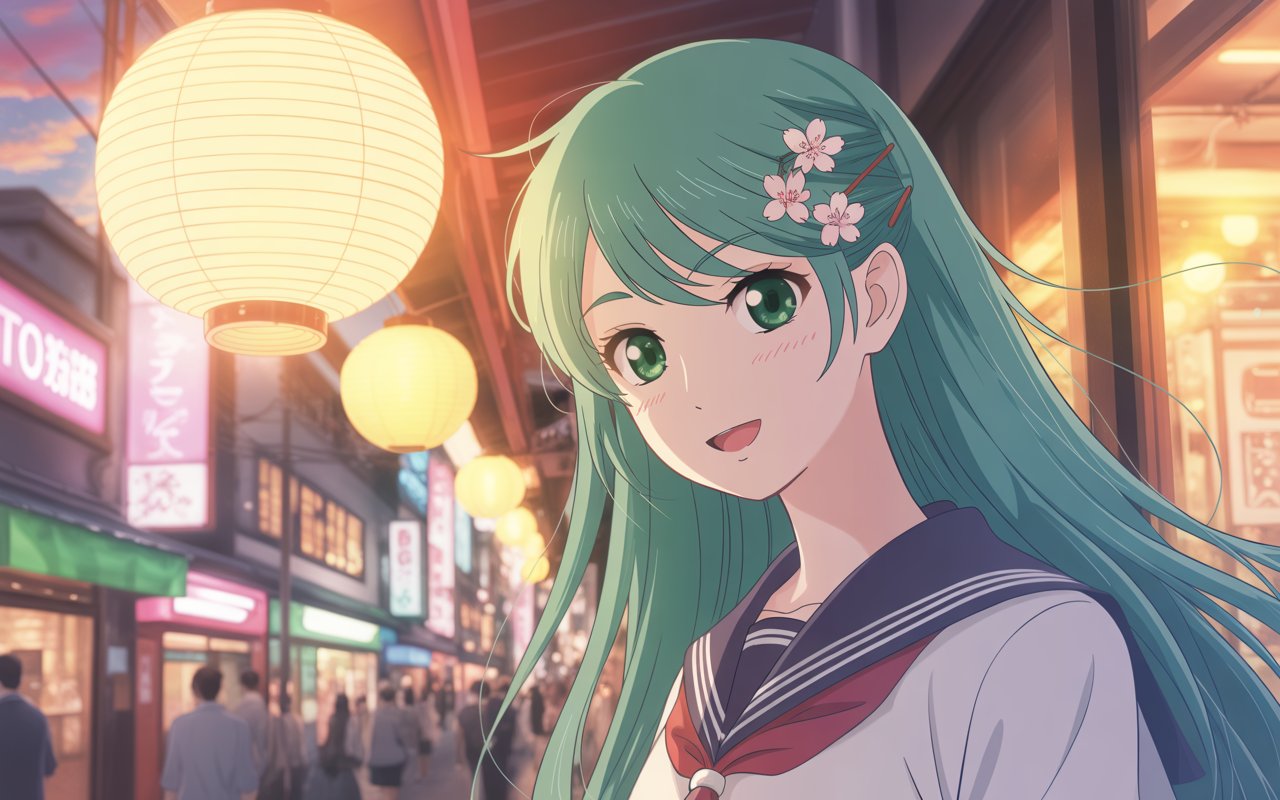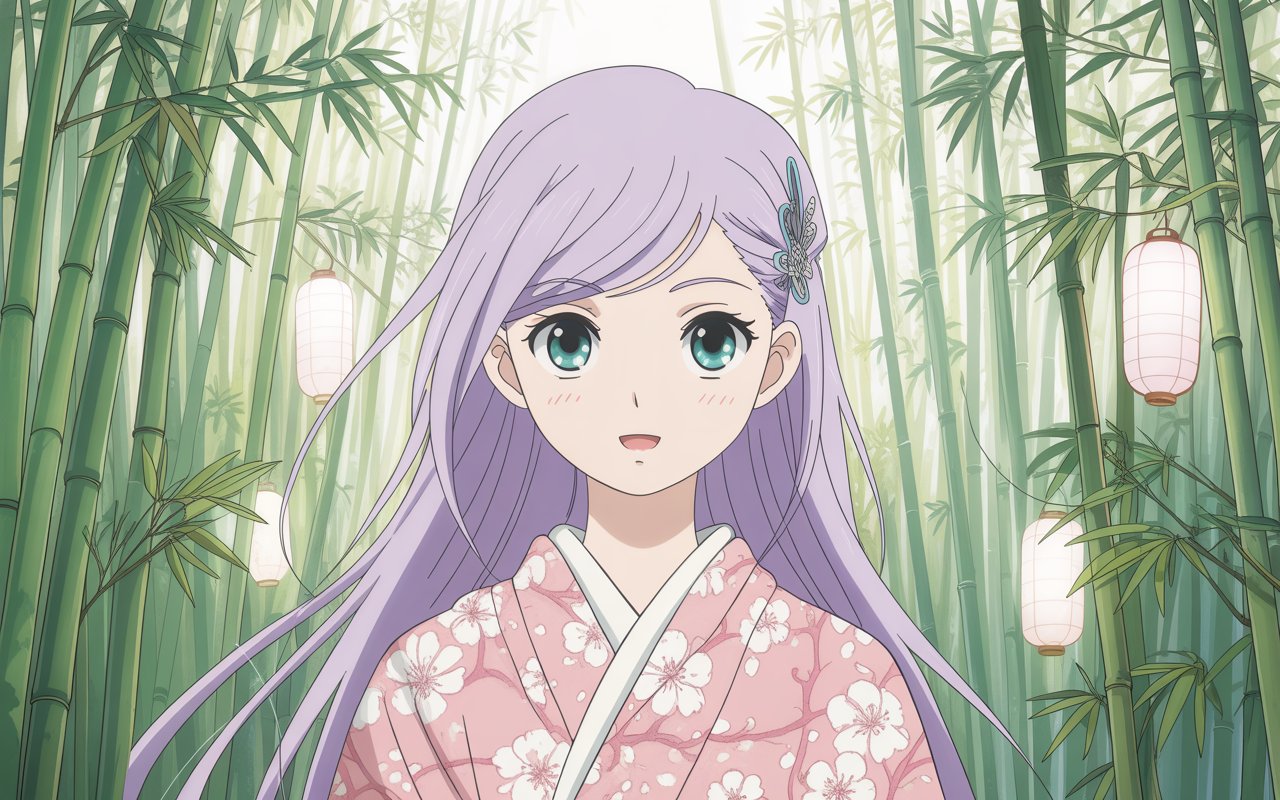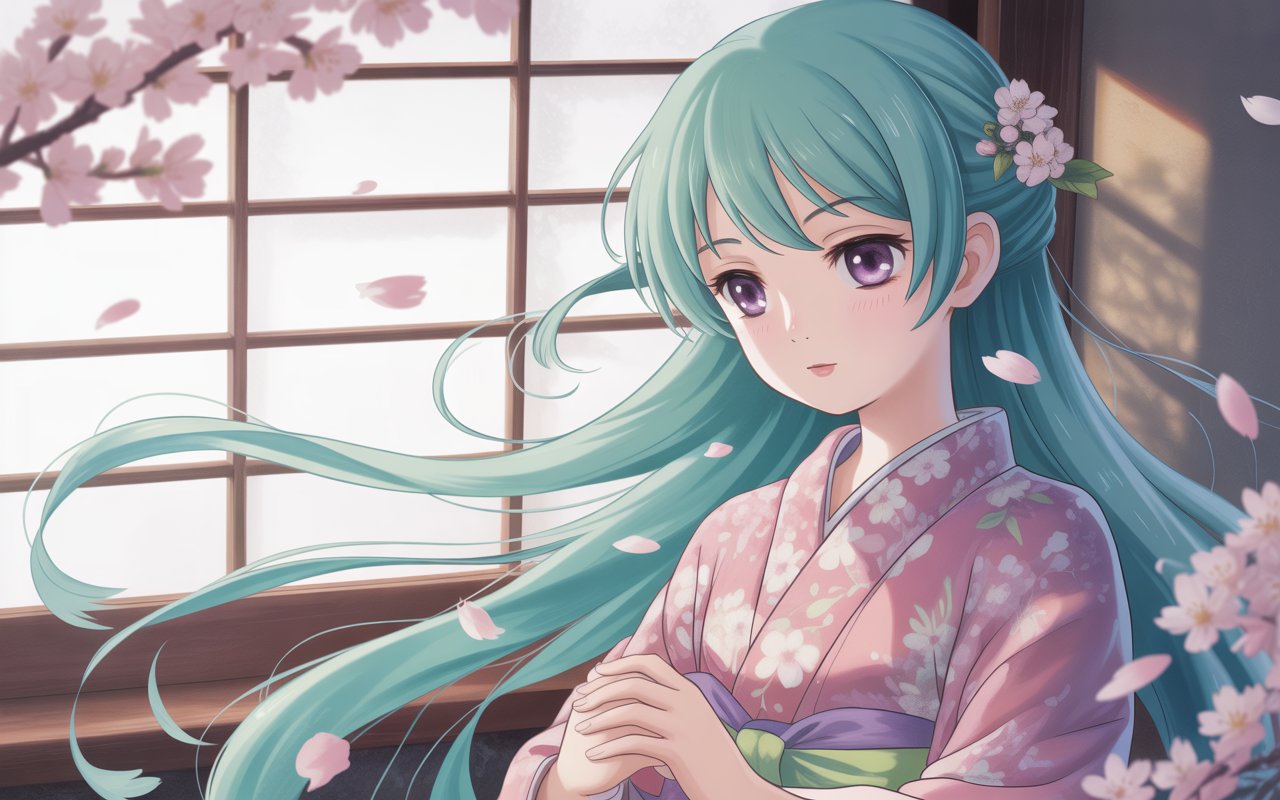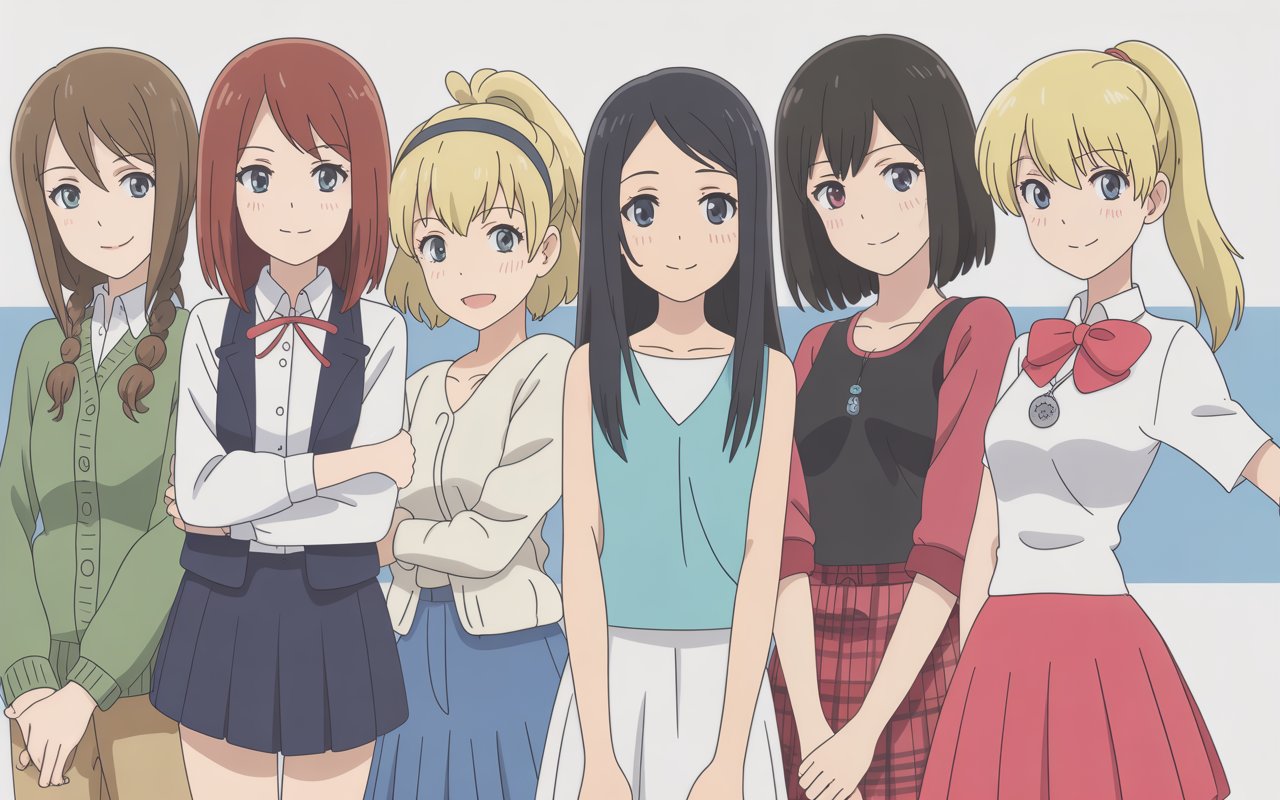Anime has a way of bringing characters to life in ways few other mediums can match. Among its many charms, the portrayal of anime girls stands out as one of the most distinctive features of Japanese animation. Whether they’re brave warriors, clumsy students, magical beings, or quiet dreamers, these characters resonate with audiences worldwide. But what exactly makes them so captivating? Why have they become such cultural icons, not just in Japan but across the globe?
In this deep dive, we’ll explore the world of anime girls—unpacking their cultural roots, artistic evolution, personality archetypes, and the impact they’ve had on fans and industries worldwide. So, grab a cup of tea and let’s take this journey together.
The Origins of Anime Heroines
Long before streaming platforms made anime a global sensation, female characters in Japanese animation were already making their mark. Early works like Astro Boy (1960s) introduced supporting female characters, but it was during the 1970s and 1980s that leading heroines began to shine. Shows such as Cutie Honey and Sailor Moon brought dynamic, strong, and magical female figures into the spotlight, setting the stage for decades to come.
The emergence of these characters was more than a storytelling choice—it reflected evolving societal roles and aspirations for young women in Japan. Animation became a canvas where idealism, fantasy, and empowerment intersected.
Evolution Through the Decades
Anime has constantly adapted to cultural shifts, and its female characters have evolved alongside it.
1970s–1980s: The Age of Pioneers
These decades were defined by adventurous heroines and the rise of magical girl series. Characters often balanced everyday school life with secret powers, offering escapism and inspiration to viewers.
1990s: Global Breakthrough
This era brought titles like Sailor Moon, Cardcaptor Sakura, and Neon Genesis Evangelion to international audiences. Female characters gained more depth, mixing vulnerability with strength. They became layered protagonists rather than sidekicks.
2000s–2010s: Diversity of Roles
With anime gaining global traction, creators experimented with character designs and storylines. From slice-of-life school comedies to dark psychological thrillers, female characters took on every imaginable role—heroes, villains, mentors, and beyond.
2020s and Beyond: New Frontiers
Modern anime embraces complexity. Heroines are no longer bound by tropes—they’re rebels, leaders, introverts, geniuses, or ordinary people dealing with extraordinary circumstances. Representation has expanded, appealing to a wider, more global audience.
The Artistry Behind the Designs

Have you ever noticed how expressive anime character designs can be? From oversized sparkling eyes to meticulously detailed hairstyles, these features aren’t random—they’re carefully crafted to convey personality and emotion.
Symbolism in Features
-
Eyes: Often called “windows to the soul,” large, shining eyes symbolize innocence or emotional openness, while narrower eyes can imply intelligence, mystery, or mischief.
-
Hair: Color and style communicate more than fashion. Pink might suggest playfulness, blue serenity, and black traditional values. Unique hairstyles often make characters instantly recognizable.
-
Clothing: Uniforms, battle outfits, or fantastical dresses give clues to their world and role in the story.
Animation Techniques
Modern technology allows animators to blend hand-drawn artistry with digital effects. This fusion helps create dynamic expressions, fluid movements, and a cinematic feel that makes characters seem alive.
Archetypes and Personality Tropes
While each character is unique, certain archetypes help audiences quickly connect with their traits. Think of these archetypes as storytelling shortcuts rather than rigid boxes.
The Tsundere
Outwardly cold but inwardly caring. A character might act aloof or combative, only to reveal a softer side later. This duality makes them intriguing and often endearing.
The Kuudere
Calm, composed, and seemingly emotionless, but they care deeply beneath their serene surface. Their quiet strength attracts fans who love subtle character development.
The Genki Girl
Energetic, optimistic, and always full of life. These characters often bring warmth and humor to their stories.
The Mysterious Enigma
Some characters keep their thoughts hidden, adding suspense and allure. Their backstories usually unfold gradually, keeping audiences hooked.
The Nurturing Figure
These characters embody kindness and support. They often serve as emotional anchors within the narrative.
These archetypes aren’t rigid—they often overlap, evolve, or even subvert expectations, leading to fresh and unpredictable storytelling.
Why Fans Connect So Deeply
Anime characters often feel more “alive” than some live-action roles. Why is that?
One reason is emotional authenticity. These characters express joy, sorrow, love, and fear in ways that resonate with real human experiences. Their journeys—whether battling monsters or navigating high school friendships—mirror universal struggles and dreams.
Another factor is relatability. Viewers see parts of themselves in these characters: the shy girl trying to make friends, the overachiever hiding insecurities, or the dreamer aiming for the stars. In a way, anime girls act like mirrors—reflecting our emotions while inspiring us to grow.
Global Popularity and Cultural Influence

The influence of these characters extends far beyond screens.
Merchandise and Fashion
From figurines to apparel, the likeness of beloved heroines adorns products worldwide. Some even inspire fashion trends, with fans recreating their outfits through cosplay or daily wear.
Conventions and Communities
Events like Anime Expo or Comiket bring fans together to celebrate their favorite characters. Cosplayers spend months perfecting their costumes, and artists sell prints, badges, and fan art inspired by popular heroines.
Cultural Bridges
Anime heroines have helped bridge cultures, introducing global audiences to Japanese language, customs, and storytelling styles. In classrooms worldwide, students cite anime as their first exposure to Japanese culture.
Representation and Empowerment
Beyond entertainment, these characters also play a role in shaping perceptions of gender and empowerment.
Breaking Stereotypes
Many modern series showcase girls leading armies, solving mysteries, or redefining heroism. They’re not just love interests or supporting figures—they drive the story.
Empathy and Diversity
While earlier series sometimes leaned on stereotypical roles, newer works embrace diversity—portraying girls with different abilities, backgrounds, and personalities. This inclusivity allows more viewers to feel represented.
Artistic Communities and Fan Creativity
The love for these characters doesn’t end when the credits roll. Fan communities have become vibrant ecosystems of creativity.
Fan Art and Doujinshi
Talented artists reinterpret characters in new styles, settings, or scenarios. Doujinshi (fan-made comics) often explore alternate stories, giving characters fresh layers.
Music and Dance Covers
Popular songs from anime series inspire fans to create covers, dance routines, and remixes, spreading the influence even further online.
Digital Spaces
Platforms like Reddit, Pixiv, and Twitter act as hubs where fans share theories, artwork, and emotional reactions, creating a sense of global community.
Beyond Fiction: Real-World Inspiration

For some, these characters become more than just entertainment—they inspire personal growth. Viewers adopt traits they admire, like determination, kindness, or resilience. Some even pursue creative careers because of their love for anime.
Think of it like planting a seed: one memorable character can spark an entire journey of self-discovery, artistry, or cultural exploration.
The Challenges and Criticisms
Not everything about the portrayal of anime girls is without debate. Critics argue that some depictions oversexualize characters or rely on outdated tropes. There’s also ongoing discussion about balancing fan service with respectful storytelling.
However, the anime industry has increasingly acknowledged these concerns. Many creators now focus on deeper characterization, nuanced storylines, and stronger representation to appeal to modern audiences.
The Future of Female Characters in Anime
Looking ahead, the future seems bright. With the global anime market expanding rapidly, creators have more freedom than ever to explore bold ideas and complex heroines.
We can expect to see:
-
More stories driven by female protagonists.
-
Increased cultural blending, as global creators bring their own perspectives.
-
Enhanced animation quality, bringing characters to life in even more vivid ways.
The evolution is far from over—it’s only just beginning.
Conclusion
Anime girls are more than colorful characters on a screen. They’re storytellers, cultural ambassadors, and sometimes, personal muses. Through decades of artistic innovation and emotional storytelling, they’ve become icons that transcend language and geography.
Whether you’re a lifelong fan or a curious newcomer, understanding their world offers a deeper appreciation for the art, culture, and creativity that make anime a global phenomenon.
FAQs
1. Why are female characters in anime often designed with big eyes?
Large eyes help convey emotions more vividly. It’s an artistic choice that allows animators to express subtle feelings through exaggerated but clear visuals.
2. Are all anime heroines based on stereotypes?
Not at all. While some archetypes exist, modern anime frequently subverts or blends these tropes, creating complex and unpredictable characters.
3. How has global popularity influenced character design?
As anime reaches wider audiences, creators experiment with diverse appearances and cultural elements, making characters more relatable to international fans.
4. Do anime heroines reflect real Japanese culture?
Yes, in many ways. Their settings, behaviors, and social dynamics often draw inspiration from Japanese customs and contemporary life, though fantasy elements are often layered on top.
5. What’s the future for female representation in anime?
Expect more diverse, empowered, and globally inspired characters, as creators respond to changing cultural expectations and storytelling trends.



